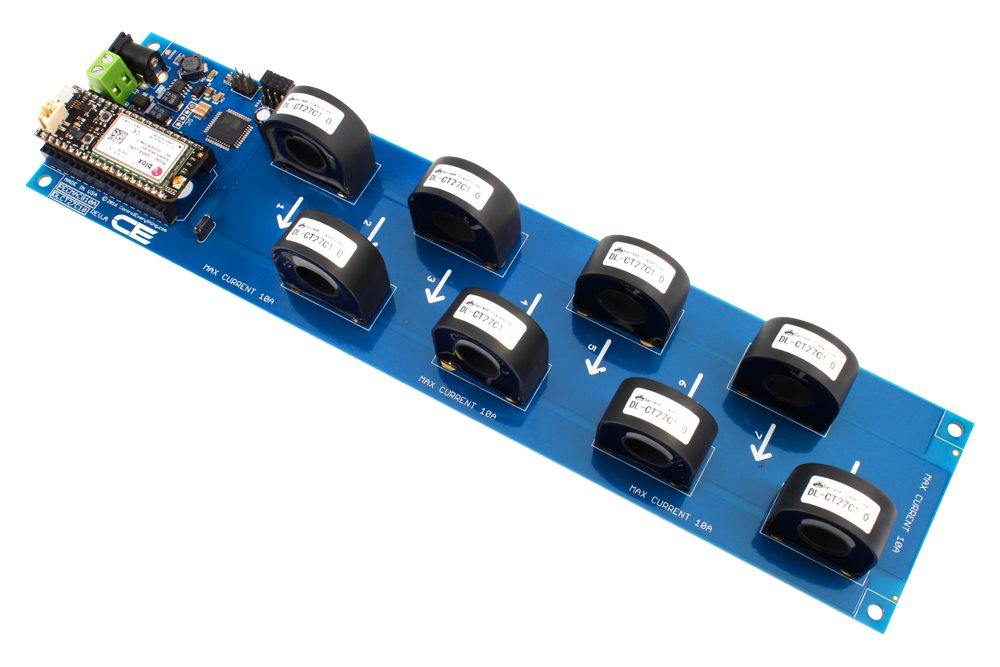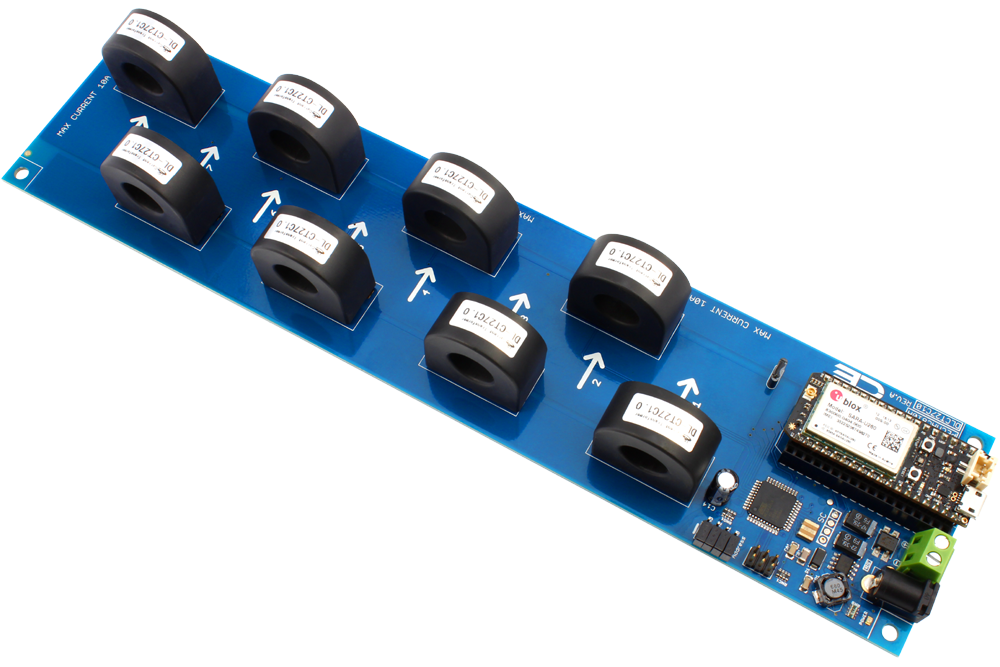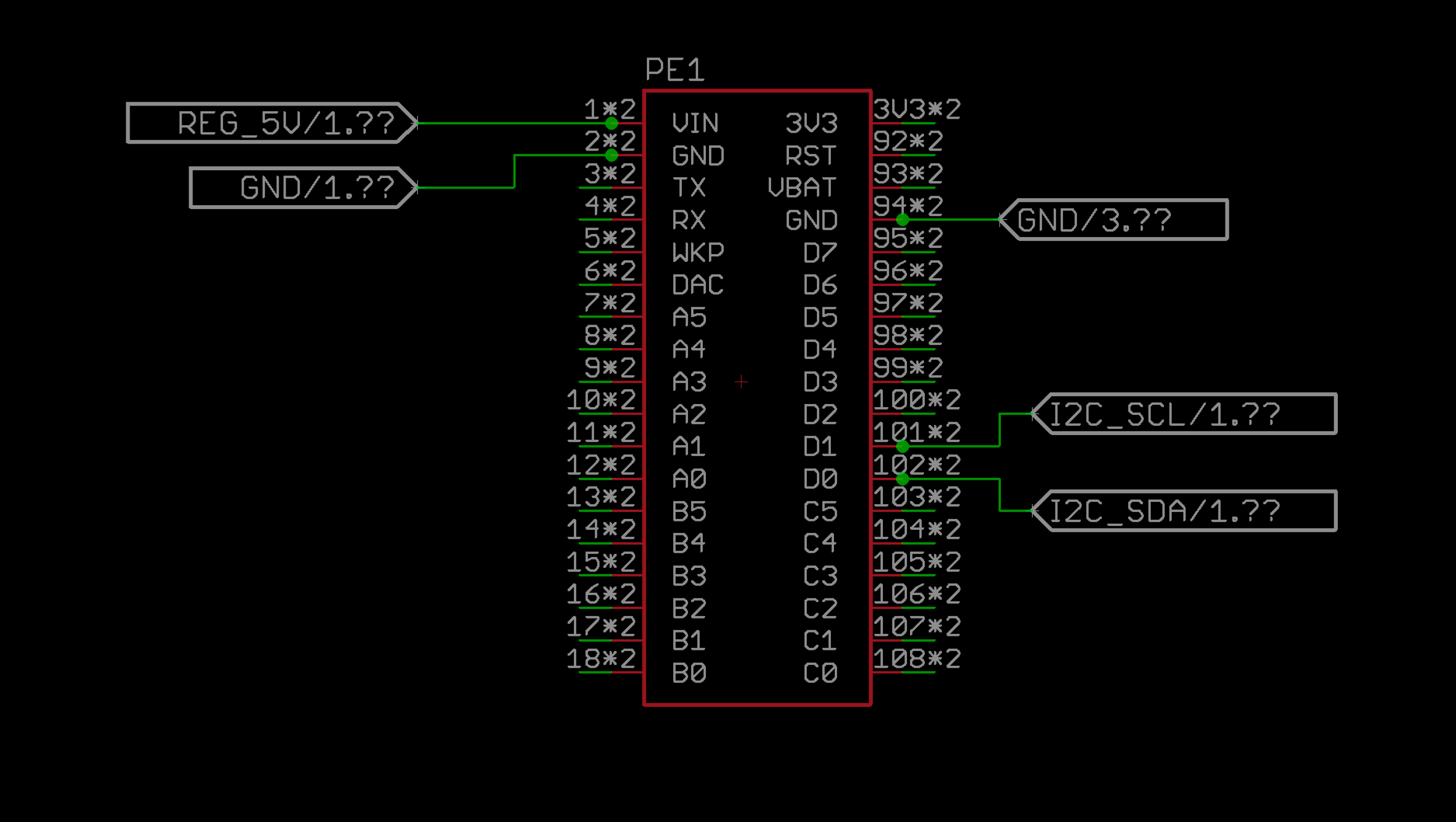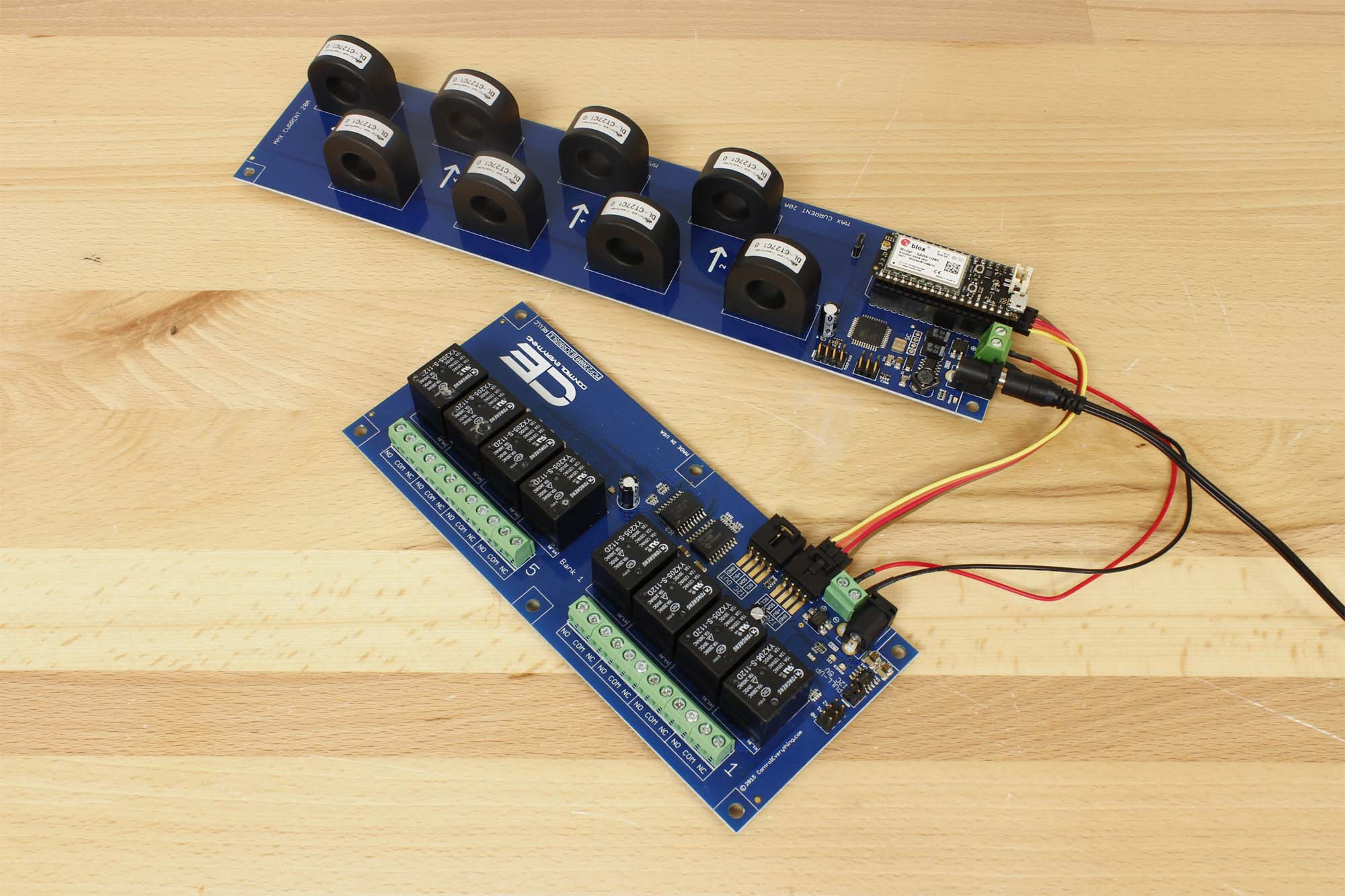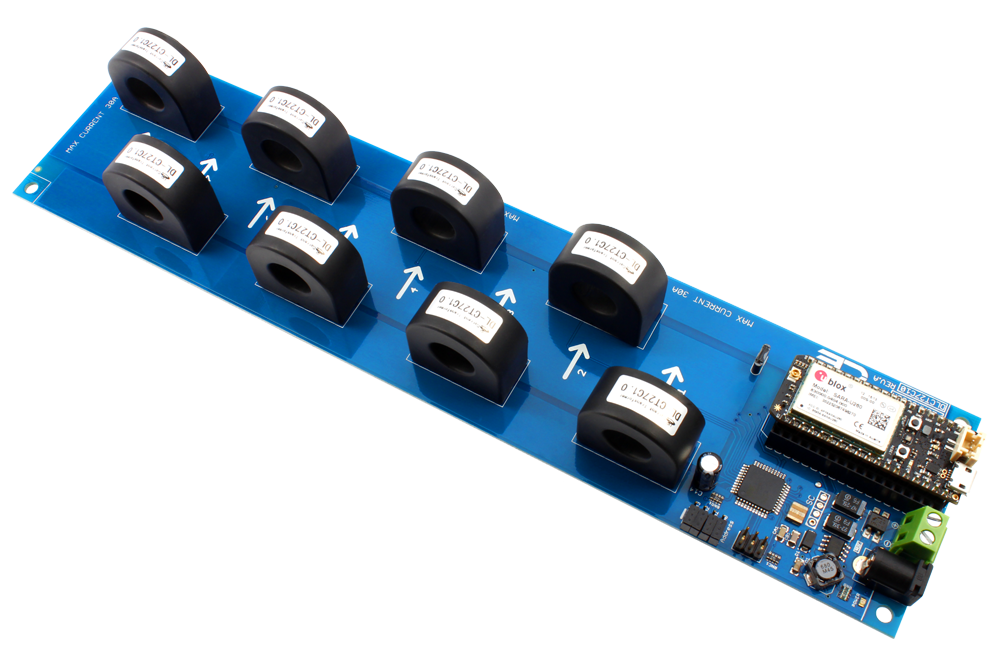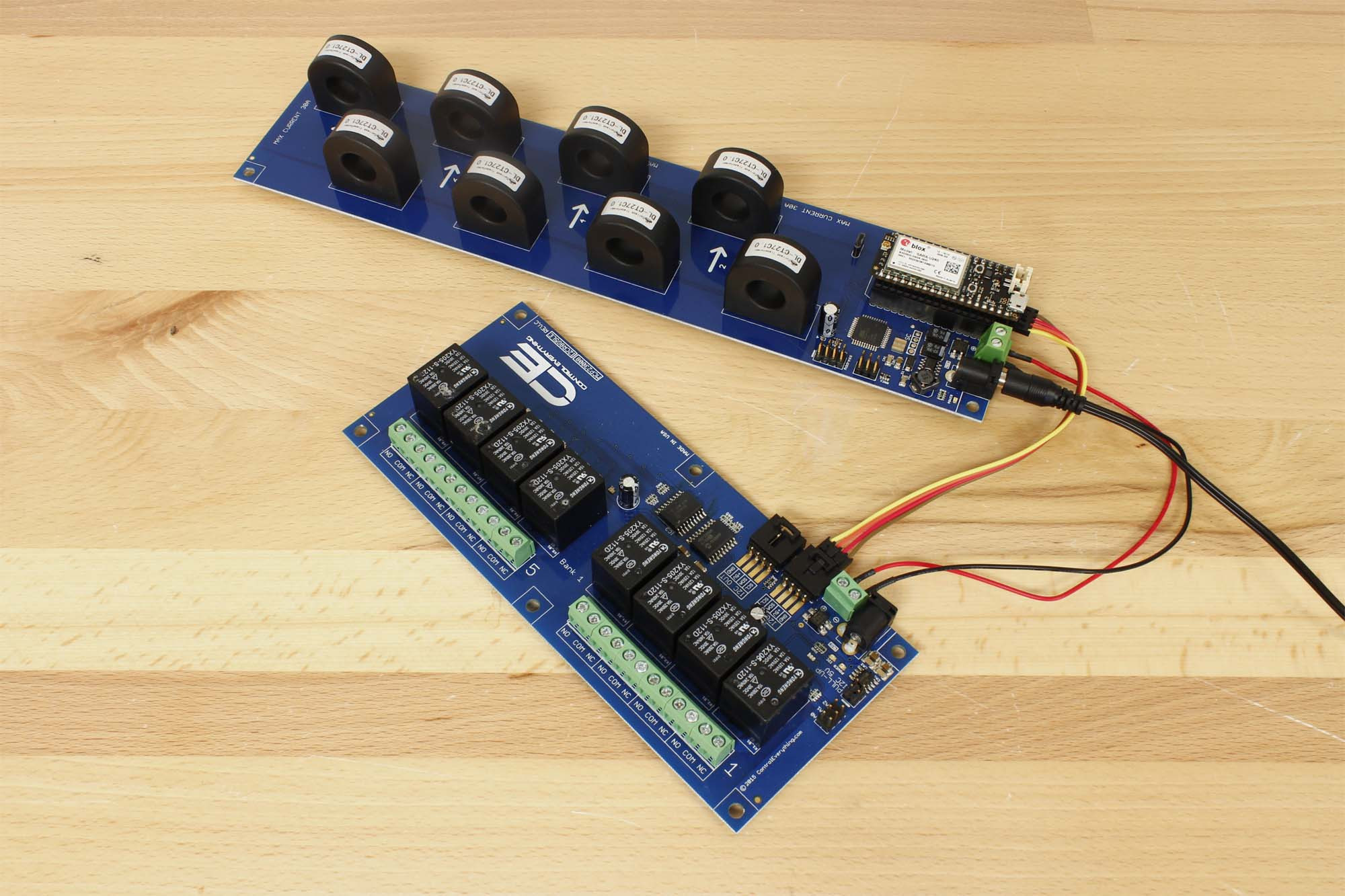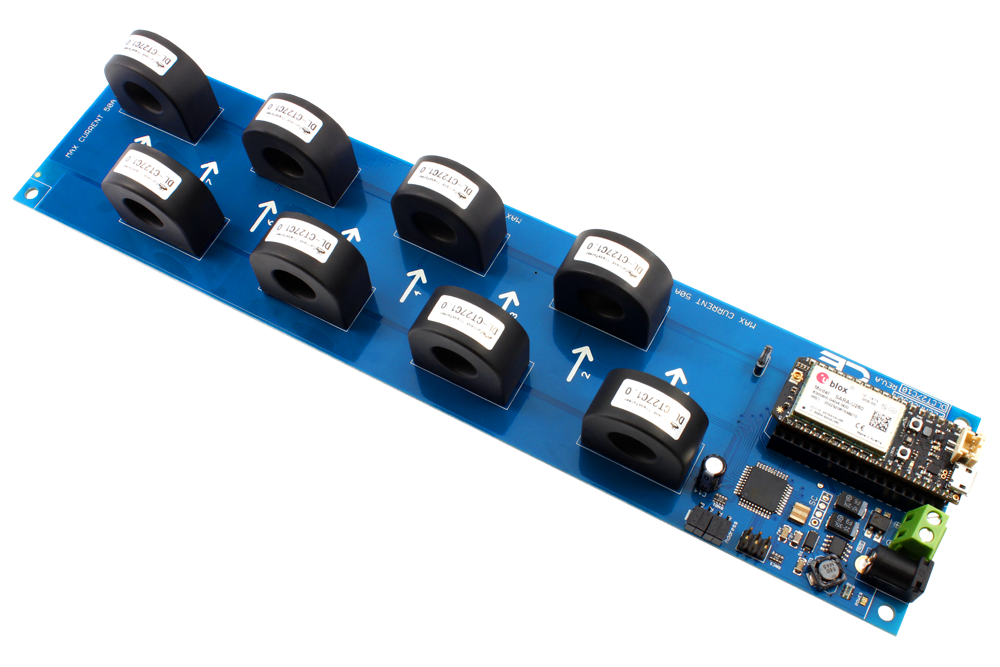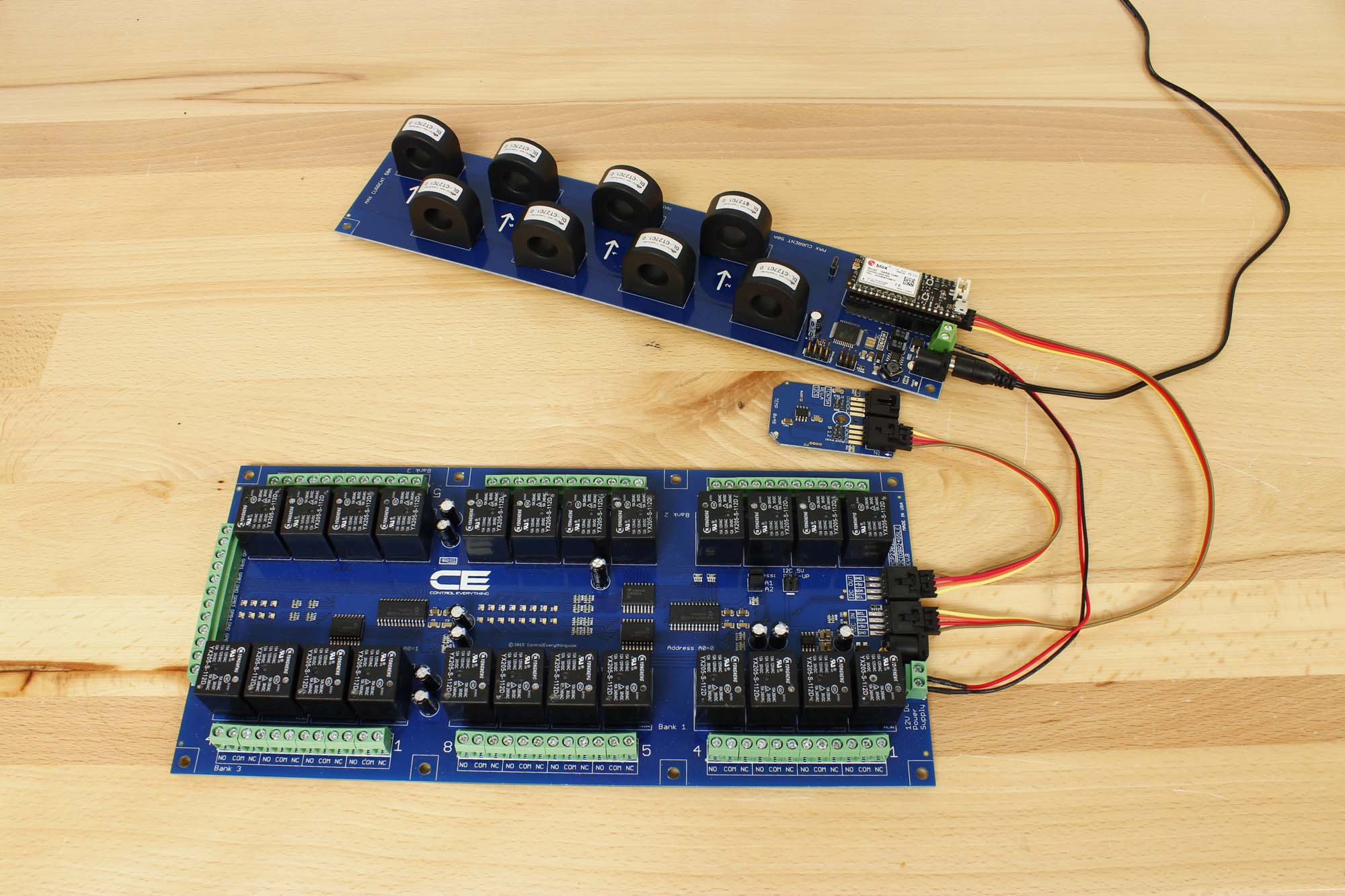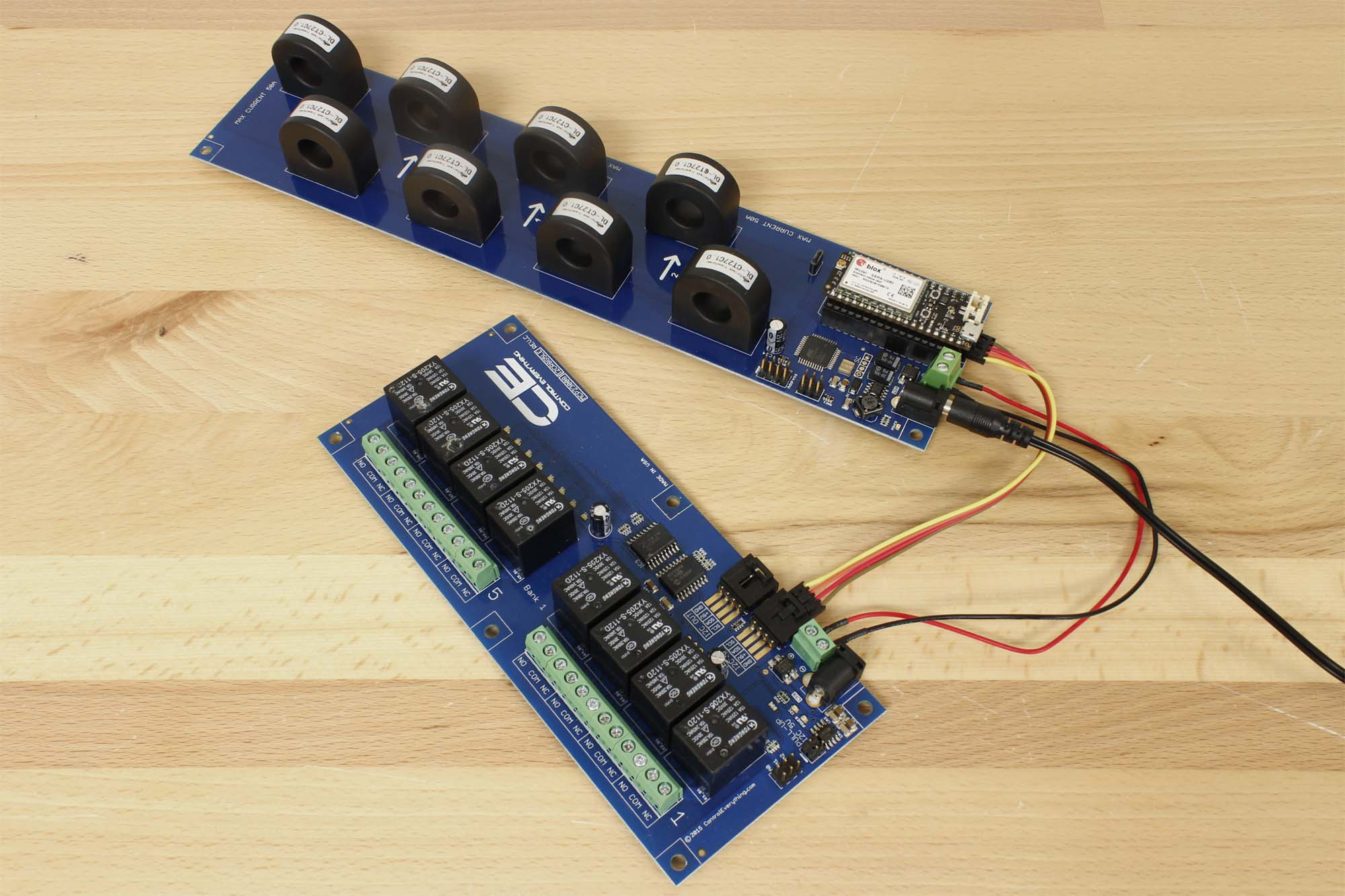8-Channel On-Board 97% Accuracy 70-Amp AC Current Monitor with IoT Interface
Highlights
- Current Monitoring for IoT Communication Modules
- Compatible with Electron, Photon, Bluz, or RedBear
- ESP8266 and USB IoT Interface Modules are Also Available
- Adaptable to Onion, PyCom, Raspberry Pi, Arduino
- 8-Channel Input with 0 to 70 Amp Input Range
- Solid Core Current Sensors with 3% Max Error Rate
- On-Board I2C Expansion Port
- Expandable to 16 Devices per I2C Port
- Expandable to Control Relays, PWM, and Many Sensors
- 0x2A I2C Start Address
Current Monitoring of AC power is now easier than ever when using the NCD series IoT Interface Current Monitoring controllers. Our customized dedicated on-board CPU handles all the current monitoring functions for you, all you have to do is ask the controller for the amperage reading. Using our IoT interface, plug-in your favorite IoT communication module and develop firmware to read energy anywhere in the world! The NCD IoT interface support Particle Electron for cellular current monitoring. Use the Particle Photon to monitor current over WiFi. The IoT interface also supports Bluz (Bluetooth BLE) or you can use one of our adapters to plug in Arduino Nano, Arduino Micro, USB, PyCom WyPy, directly on-board! Plug in the SI I2C adapter for interface to Raspberry Pi, BeagleBone, or Arduino Uno. The NCD IoT interface standard makes it easy to connect to just about any computer or microcontroller! Based on our plug-and-play I2C interface standard, all NCD IoT devices support I2C communications using a I2C expansion port, making it easy to expand to a wide variety of sensors, relay controllers, PWM controllers, and much more!
This controller has eight 70-Amp current monitoring channels, precision tuned to monitor the current flow through the on-board current sensor with a 3% maximum error rate (Tested up to 70 Amps). While each sensor is rated for 70 Amps, this controller is available pre-tuned with 10, 20, 30, 50, or 70 amps. These tuning ranges provide the best possible accuracy within the specified range, though users should take care to never exceed the pre-tuned range. To use this device, simply run an AC power wire, up to 10mm in size, through the center of the sensors. The on-board custom designed CPU will do the rest using I2C communications to your favorite IoT communications module. This controller includes an I2C expansion port, allowing expansion for more current monitoring inputs or other types of I2C sensors and devices.
Four on-board address jumpers allow expansion of up to 16 current monitoring devices through the I2C expansion port. Mix and match current monitoring controllers of any size to meet your specific application requirements. Software developers can take advantage of our ControlEverythingCom GitHub repository for current monitoring and programming samples. This device only requires a 12VDC power supply for operation, which may be plugged into the controller using a 2.1mm center positive barrel connector or on-board terminal block for direct wired power supplies.
What is the NCD IoT Interface?
The NCD IoT Interface provides users with a means of changing or upgrading the IoT communications technology as new technologies emerge. The NCD IoT Interface is directly compatible with Particle Photon for WiFi communications, Electron for Cellular Communications, Bluz for Bluetooth. Optionally, adapters may be installed to provide a direct interface to Arduino Nano, Micro, USB, PyCom WyPy, Onion Omega, Raspberry Pi, and much more. The NCD IoT interface allows you to re-use your hardware so it never becomes obsolete! Based on I2C communications, the NCD IoT Interface uses only 2 GPIO lines of your microcontroller, freeing the rest of your CPU for other tasks.
nodeLynk™ IoT Device Expansion
This is a IoT Device which accepts a common processor and provides on-board sensing or control capabilities. This IoT device may be expanded to include additional hardware functionality using nodeLynk Expansion Devices. The NCD IoT socket found on IoT devices is capable of directly handling NCD ESP8266 and ESP32 series processors as well as Particle Photon and Particle Electron. We also manufacture many adapters for the NCD IoT socket for Arduino Nano, Micro, and Feather microprocessor modules. Between the socket is a nodeLynk connector, which is used for I2C Expansion.

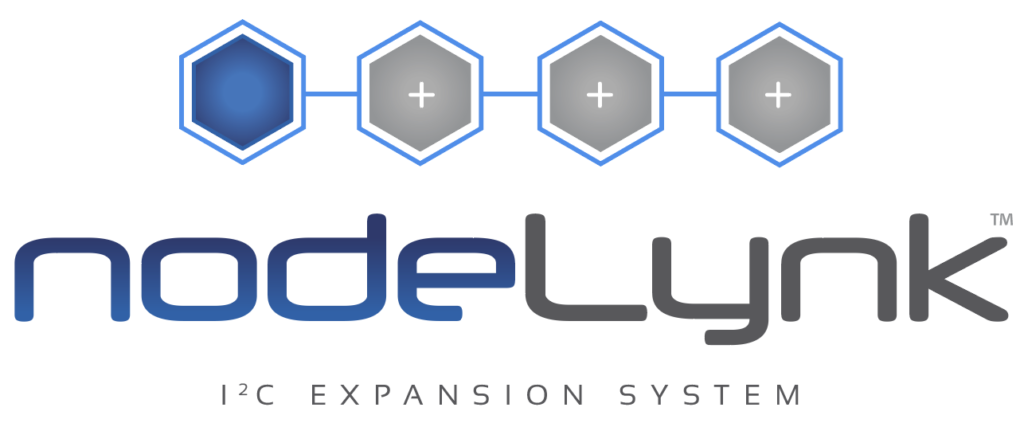
What is nodeLynk?
Chain expansion devices using nodeLynk. Connect a wide variety of accessories to expand the capabilities of a nodeLynk compatible controller. Use nodeLynk to add Relay Controllers, Sensors, PWM Drivers, Displays, and a wide variety of 4-20mA, 0-10V ADCs and DACs, as well as a wide array of TTL & Isolated GPIO devices. All nodeLynk devices use I2C communications to chain devices together. nodeLynk is an easy way to expand functionality without soldering. nodeLynk allows expansion in seconds so you can focus on your software and firmware development.

Unlimited I2C Expansion
Based on our plug-and-play nodeLynk I2C interface standard, all NCD IoT devices are equipped with a nodeLynk I2C expansion port, making it easy to expand to a wide variety of sensors, current monitors, relay controllers, PWM controllers, and much more! We are always designing new nodeLynk expansions for our plug-and-play nodeLynk I2C framework. We are dedicated to building a product line of interconnected devices to simplify all forms of automation. Re-use or upgrade your hardware in seconds by selecting the modules that best fit your needs, and chaining them together using the included nodeLynk I2C expansion cables!
Mechanical Drawing
Wiring Diagrams
Datasheets
Community Repositories
Integration Notes
This device is tuned for reading current in the 0 to 70-Amp range. Exceeding 70 Amps through the core sensor may damage the on-board CPU. For best accuracy, we highly recommend choosing a controller with the lowest possible amperage rating required for your application. This device is designed for AC current measurement only and cannot be used to monitor DC loads. This device is typically more accurate than commercially available clamp meters and nearly as accurate as most direct wired meters. This device will arrive preset to calibration values known to work well in our master designs for resistive loads, recalibration will be required for inductive loads. Each channel may be individually calibrated. All current monitoring controllers require half of a second to analyze and compute a current monitoring result for all channels. For best performance, we suggest communications with this device no more than once per second.
Usage Notes
All NCD current monitoring controllers with on-board current sensors are calibrated for use with resistive loads. They can be re-calibrated for inductive loads, but we do not recommend mixing the two types of loads using the same controller. A mix of resistive and inductive loads may be monitored using NCD current monitoring controllers equipped with external off-board sensors. These controllers include a wire between the main board and the sensor.
Do not attempt to pass more than a single wire through the current sensor. Doing so will cancel the signal and prevent proper operation.
IoT Interface Compatibility
NCD IoT Interface devices are designed to plug in to many popular IoT computing platforms. This allows the “brains” from other manufacturers to directly plug into our devices for easy plug-and-play operation. IoT interface devices use I²C as the underlying communications technology. The notes below will guide you into plugging 3rd party IoT technologies into our devices, we will highlight any adapters that may be required in this section. Please note that all IoT Interface Devices act as a I²C Master Device, and may be expanded by connecting to any of our Cross-Platform nodeLynk I²C Slave Devices using the nodeLynk I²C Output.
NCD IoT Interface Direct Connection
The following devices directly plug into NCD IoT Interface controllers without a adapter.
- Particle Electron
- Particle Photon (Particle.io)
- Bluz Module (Bluz.io)
- ESP8266 Module
If using a Particle Photon or Particle Electron communications module, the PKFR Key Fob Receiver overlay shield may be used to add long-range wireless Key Fob remote control to the communications module.
NCD IoT Interface Adapters
Use the following adapters will adapt the IoT Interface for I2C communications with other popular computing platforms:
- Arduino Nano using the Arduino Nano Adapter
- Arduino Micro using the Arduino Micro Adapter
- Onion Omega 1&2 using the OC Adapter
- Pycom WiPy using the WiPy Adapter
- Pycom WiPy2 & LoPy using LoPy Adapter
- Adafruit Huzzah ESP8266 using the Adafruit Huzzah Adapter
- Windows using USB Interface and the USB IoT Interface Adapter
Convert IoT to I2C Interface Devices
- This device may be converted to an I²C slave device using the I2C to IoT Interface Adapter, ideal for use with Raspberry Pi, Beaglebone, Arduino Uno, and BridgeX5.
Arduino Interface
- Use the I2C to IoT Interface Adapter and a Arduino Uno Interface Adapter
- Use the I2C to IoT Interface Adapter and a Arduino Nano I²C Shield
- Use the I2C to IoT Interface Adapter and plug into any Arduino Nano Master Device
- Use the I2C to IoT Interface Adapter and plug into any Arduino Micro Master Device
- Use the I2C to IoT Interface Adapter and plug into any Arduino Due Master Device
BeagleBone Interface
- Use the I2C to IoT Interface Adapter and a BeagleBone I²C Interface Adapter
Banana Pi Interface
- Use the I2C to IoT Interface Adapter and a Banana Pi I²C Interface Adapter
C.H.I.P. Interface
- Use the I2C to IoT Interface Adapter and a C.H.I.P. I²C Interface Adapter
Raspberry Pi Interface
- Use the I2C to IoT Interface Adapter and a Raspberry Pi I²C Interface Adapter
- Use the I2C to IoT Interface Adapter and a Raspberry Pi 2/3 I²C Interface Adapter
- Use the I2C to IoT Interface Adapter and a Raspberry Pi Zero I²C Interface Adapter
Windows 8/10 PC Interface
- Use the I2C to IoT Interface Adapter and a USB to I2C Converter
- Use the I2C to IoT Interface Adapter and a BridgeX5 Series Controller
Key Fob Compatibility
NCD IoT Interface devices are also compatible with a 418MHz Key Fob receiver (Part Number: PKFR), allowing your Particle Electron, Photon, or Bluz to receive and process remote Key Fob commands up to 750 feet away. Up to 40 remote controls may be associated to the PKFR. Program your IoT communications module to receive wireless remote control commands using a Key Fob. Compatible with 1, 2, 3, 4, 5, and 8-Button MS Series Key Fobs from Linx Technologies.
Out of stock





